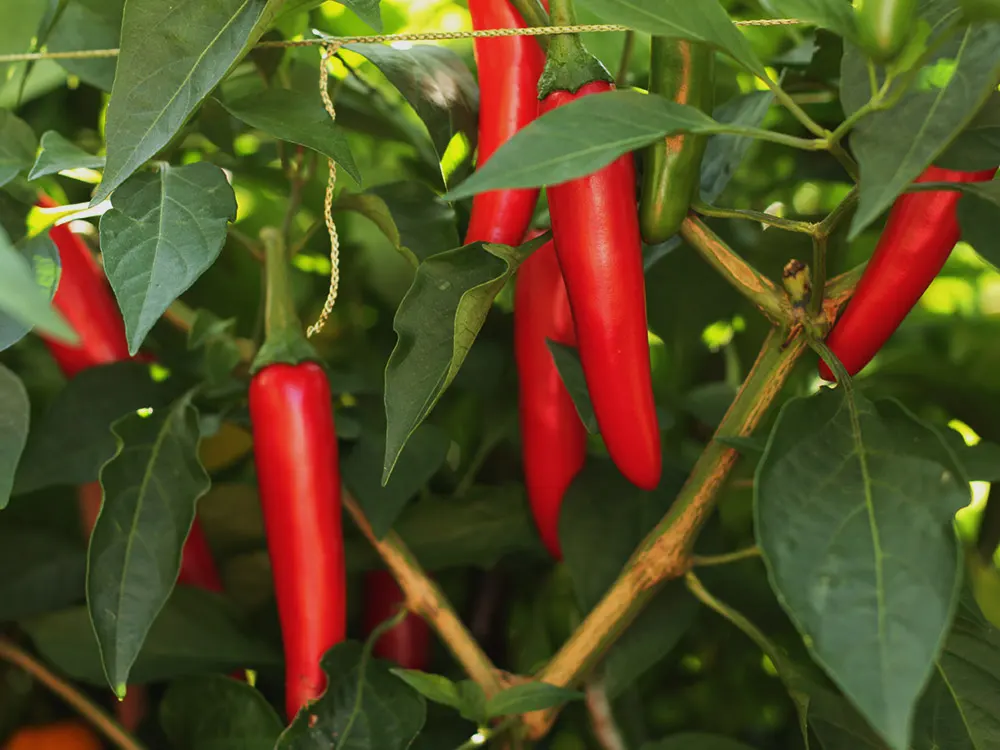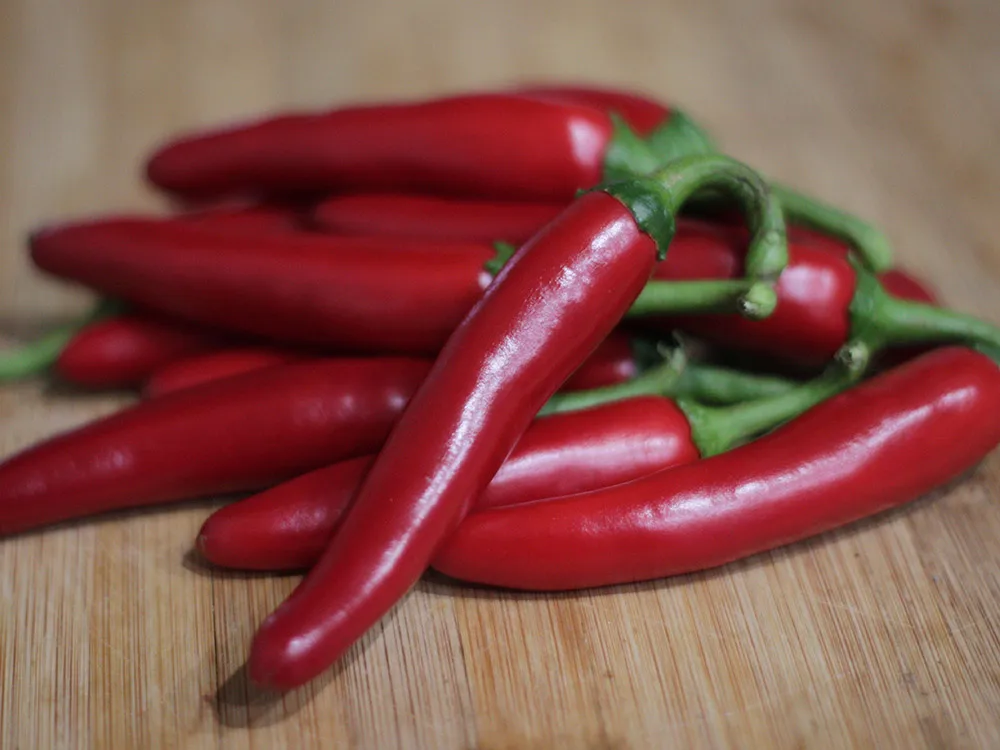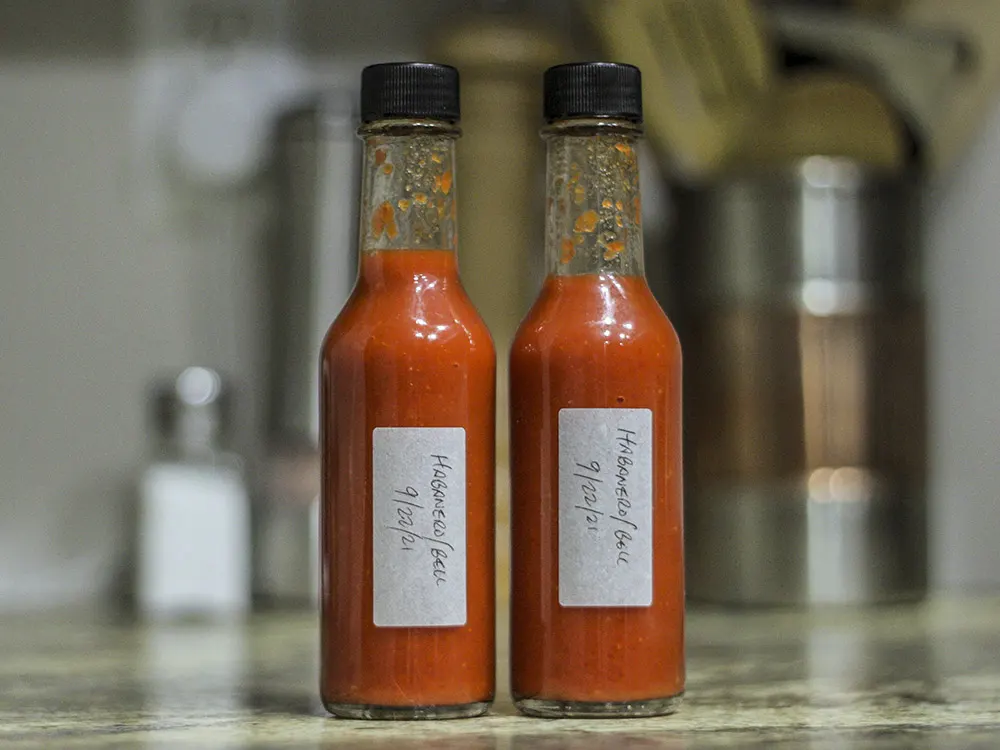If you’ve ever tasted the rich and spicy flavors of Korean cuisine, you’ve likely encountered the incredible taste of Gochujang and Gochugaru. These two ingredients are absolutely essential in Korean cooking, and they’re the stars of today’s post. So, let’s dive into the world of Gochujang vs Gochugaru and learn how they differ, how they’re used, and what makes them so special.
Korean cuisine is well-known for its bold and spicy flavors, which are a result of the careful use of various spices and condiments. Two key ingredients that really make Korean dishes stand out are Gochujang and Gochugaru.
Both Gochujang and Gochugaru are made from red Gochugaru chili peppers, which are known as “taeyang-cho” or “gochu” in Korea. These peppers are sun-dried and can have varying levels of heat and flavor, depending on the variety and cultivation methods.
History of Gochujang and Gochugaru
Gochujang is a fermented red chili paste that has been a staple of Korean cuisine for centuries. Made from red chili peppers, glutinous rice, fermented soybeans, and salt. Gochujang has a unique, complex flavor that’s spicy, savory, and slightly sweet.
The history of Gochujang can be traced back to the Goryeo Dynasty (918-1392). It wasn’t until the Joseon Dynasty (1392-1910) that it became a widespread and essential ingredient in Korean cuisine. The chili peppers used in Gochujang were introduced to Korea by Portuguese traders during the 16th century
Gochugaru, on the other hand, is flakes made from dried red chili peppers. Traditionally these peppers are sun-dried, de-seeded, and then crushed or ground into a coarse or fine powder. When making the your own flakes, dehydrating the peppers produces similar results.
Gochugaru has a rich history in Korean cuisine, with its origins dating back to the same time period as Gochujang. It is believed that the chili peppers used to make Gochugaru were also introduced to Korea by Portuguese traders in the 16th century.
Gochujang vs Gochugaru Comparison

| Feature | Gochujang | Gochugaru |
|---|---|---|
| Form | Fermented red chili paste | Red chili powder |
| Flavor Profile | Spicy, sweet, and savory | Smoky, slightly sweet, and fruity |
| Heat Level | Generally spicier | Can range from mild to hot |
| Culinary Uses | Sauces, marinades, stews | Kimchi, soups, side dishes |
| Production | Fermented with glutinous rice, soybeans, and salt | Sun-dried and crushed red chili peppers |
| Health Benefits | Protein, capsaicin (consume in moderation due to sodium and sugar) | Capsaicin (consume in moderation) |
Gochujang: The Fermented Red Chili Paste
As we’ve mentioned earlier, Gochujang is a spicy and savory fermented red chili paste that plays a central role in many Korean dishes. Its unique flavor profile and heat level make it a popular choice for adding depth and heat to a wide variety of dishes.
No products found.
Flavor Profile and Heat Level
Gochujang has a complex and multi-layered flavor that’s spicy, sweet, and umami-rich. Its heat level can range from mild to very hot, depending on the type of red chili peppers used in its production.
Different brands and recipes of Gochujang may also have varying heat levels, so it’s a good idea to taste the paste before adding it to your dishes to ensure the desired spice level.
Culinary Uses and Popular Dishes Featuring Gochujang
Gochujang is an incredibly versatile ingredient, and it’s used in a wide variety of Korean dishes.
Some popular dishes that feature Gochujang as a key ingredient include:
- Bulgogi: A popular Korean dish made with thinly sliced marinated beef, usually grilled or stir-fried. Gochujang adds a spicy kick to the marinade, which also includes soy sauce, sugar, sesame oil, garlic, and ginger.
- Bibimbap: A colorful and satisfying rice dish topped with an assortment of vegetables, protein (such as beef, chicken, tofu, or egg), and a dollop of Gochujang. The ingredients are mixed together with the Gochujang before eating, giving the dish a wonderful balance of flavors and textures.
- Tteokbokki: This popular street food is made from chewy rice cakes cooked in a spicy and sweet Gochujang-based sauce. Tteokbokki is often garnished with sesame seeds and green onions and can include other ingredients like fish cakes, boiled eggs, or vegetables.
Health Benefits and Nutritional Profile
Gochujang is not only delicious but also offers some health benefits due to its ingredients. The fermented soybeans in Gochujang provide a good source of protein. The red chili peppers contain capsaicin, which is known for its potential anti-inflammatory and antioxidant properties. However, it’s essential to remember that Gochujang is also high in sodium and sugar.
Gochugaru: The Versatile Chili Powder
Gochugaru, the versatile chili powder, is another essential ingredient in Korean cuisine. Its unique flavor and heat level make it the perfect addition to various dishes, from kimchi to stews and beyond.
No products found.
Flavor Profile and Heat Level
Gochugaru has a smoky, slightly sweet, and fruity flavor profile. Its heat level can range from mild to hot, depending on the type of red chili peppers used and how they’re processed. Different brands of Gochugaru may have varying heat levels. Taste the powder before using it in your recipes to ensure you achieve the desired spice level.
Culinary Uses and Popular Dishes Featuring Gochugaru
Like Gochujang, Gochugaru is a versatile ingredient that can be used in many Korean dishes.
Some popular dishes that feature Gochugaru include:
- Kimchi: This iconic Korean dish is made from fermented vegetables, most commonly Napa cabbage, seasoned with Gochugaru, garlic, ginger, fish sauce, and other ingredients. The Gochugaru gives kimchi its signature red color and spicy flavor.
- Jjigae: A comforting Korean stew made with various ingredients like tofu, vegetables, and meat or seafood, all simmered in a rich, spicy broth. Gochugaru is used to give the broth its heat and color.
- Banchan: These small side dishes are served alongside a Korean meal and often include vegetables, fish, or meat seasoned with Gochugaru. Some popular banchan dishes featuring Gochugaru include spicy cucumber salad, stir-fried anchovies, and seasoned spinach.
Health Benefits and Nutritional Profile
Gochugaru offers some health benefits, mainly due to the capsaicin found in red chili peppers. Capsaicin has been linked to potential anti-inflammatory, antioxidant, and metabolism-boosting properties.
However, like Gochujang, it’s crucial to consume Gochugaru in moderation, especially for those sensitive to spicy foods.
No products found.
Comparing Gochujang vs Gochugaru
Now that we’ve explored both individually, let’s take a closer look at their similarities and differences in the context of Gochujang vs Gochugaru.
Similarities between the Two Ingredients
- Both are made from chili peppers: Gochujang and Gochugaru are both derived from red chili peppers, which give them their spicy flavor and red color.
- Important in Korean cuisine: These two ingredients are essential in Korean cooking and are used in a variety of dishes, from main courses to side dishes.
Differences between the Two Ingredients
- Texture and form: Gochujang is a thick, fermented paste, while Gochugaru is a coarse or fine powder made from dried, crushed red chili peppers.
- Flavor profile and heat level: Gochujang has a complex flavor that’s spicy, sweet, and savory, while Gochugaru has a smoky, slightly sweet, and fruity flavor. The heat levels in both ingredients can vary, but Gochujang is generally considered to have a more intense heat due to its concentrated form.
- Culinary uses and versatility: While both ingredients are versatile, Gochujang is often used as a base for sauces, marinades, and stews, whereas Gochugaru is primarily used as a seasoning for kimchi, soups, and various side dishes.
- Production methods: Gochujang is made through a fermentation process that combines red chili peppers, glutinous rice, fermented soybeans, and salt. In contrast, Gochugaru is produced by sun-drying and crushing red chili peppers.
- Nutritional profile and health benefits: Both Gochujang and Gochugaru offer some health benefits due to the capsaicin content found in red chili peppers. However, Gochujang is generally higher in sodium and sugar, making it essential to consume in moderation.
Tips for Cooking with Gochujang vs Gochugaru

Now that you’re familiar with the differences between Gochujang and Gochugaru, here are some helpful tips for using these ingredients in your own cooking adventures.
How to Select the Best Quality Ingredients
When shopping for Gochujang and Gochugaru, look for products made in Korea, as these are often of higher quality.
Check the ingredient list for minimal additives and preservatives, and opt for organic products if possible. Also, consider the heat level you prefer and choose the appropriate product accordingly.
Storage Recommendations
To maintain the best flavor and freshness, store Gochujang in an airtight container in the refrigerator once opened. Gochugaru should be stored in a cool, dark place, such as a pantry or cupboard. Be sure and use an airtight container to prevent exposure to heat, light, and moisture.
Adjusting Heat Levels According to Personal Preference
When cooking with Gochujang vs Gochugaru, keep in mind that the heat level can vary between brands and recipes. Start with a small amount and adjust to taste, ensuring the dish doesn’t become too spicy for your preference. If you prefer less heat, you can also look for milder versions of these ingredients.
Substitutions and Alternatives for Those with Dietary Restrictions
If you have dietary restrictions or allergies, there are alternatives to Gochujang and Gochugaru that you can use in your cooking.
For a soy-free Gochujang alternative, you can try a combination of red pepper flakes, miso paste (or chickpea miso for a soy-free option), and a sweetener like honey or maple syrup.
For a Gochugaru substitute, consider using a mix of mild and hot paprika, or another chili powder that suits your taste and heat preferences.
Conclusion
In conclusion, while Gochujang and Gochugaru share some similarities, they each have distinct characteristics that make them unique and essential ingredients in Korean cuisine.
By understanding the differences between these two ingredients, you can enhance your culinary skills and create a variety of delicious, authentic Korean dishes. Don’t be afraid to experiment with both Gochujang vs Gochugaru in your cooking.
Share your favorite recipes featuring these ingredients in the comments section below. Happy cooking!
FAQ: Gochujang vs Gochugaru
Can I use Gochujang instead of Gochugaru for kimchi?
While Gochujang isn’t a direct substitute for Gochugaru, you can use it in a pinch. Adjust the recipe to account for gochujang’s thicker texture, sweeter taste, and extra saltiness.
What is spicier Gochujang or Gochugaru?
Heat levels can vary, but generally, Gochujang is considered spicier due to its concentrated form. Gochugaru’s spiciness depends on the type of red chili peppers used and their processing method.
What can I substitute for Gochujang?
A combination of red pepper flakes, miso paste, and a sweetener like honey or maple syrup can be used as a gochujang substitute. Adjust proportions to match the desired flavor and consistency.
How long does Gochujang last once opened?
Gochujang can last up to a year in the refrigerator once opened, as long as it’s stored in an airtight container. Check for any signs of spoilage, such as mold or off-odors, before using.
Is Gochugaru just chili powder?
While Gochugaru is a type of chili powder made from Korean red chili peppers, it has a distinct flavor profile – smoky, slightly sweet, and fruity which sets it apart from other chili powders.


